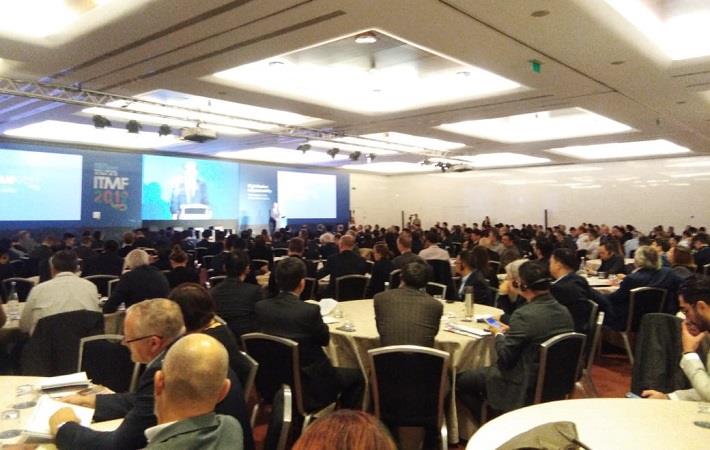
The textile industry in Portugal, the host country, has proven to be an international case study of success, said Mr. Mário Jorge Machado, President of the Portugal Textile and Apparel Industry Association (ATP). Summarising the transformation in the Portuguese textile industry in the last 10 years, Machado said it shifted competition based on price to competition based on value. "The industry no longer is an order taker but is rather an active solution provider to the client."
"The textile industry in Portugal has proven to be an international case study of success, and many other manufacturing activities even geographically scattered wish to imitate us on the pursuit of an identical achievement," added Machado.
The general theme of the ITMF Annual Conference 2019 subject combined two of the most important challenges faced by the global textile industry - digitalisation and sustainability. In various session 40 experts from brands and retailers, textile and apparel manufacturers fibre producers and industry experts highlighted the importance of making use of digitalisation in the textile value chain in order to improve productivity and thus also to reduce energy and water consumption as well as waste.
In his welcome address, ITMF President, Mr. Kihak Sung emphasized: “Awareness especially of young consumers on these issues has been accelerated, and the demand for products with image of sustainability are showing very dramatic upsurge lately. For instance, the demand of Korean consumers on recycled and eco-friendly products is expanding explosively. Now, it’s only a matter of time for this trend to change the entire regime of our business.”
In his presentation on 'Global Textile Industry Outlook', ITMF Director General Dr Christian Schindler said the share of e-commerce business has risen to around 20 per cent. While new technologies allow mass customised production, Internet of Things (IoT) offers new potential to increase productivity. Moreover, sustainability is a trend and an integral part of business, he said.
Highlighting that infrastructure projects like the One Belt One Road (OBOR) initiative are creating new opportunities, Schindler said that there is a slow shift in textile and garment production from China to other countries in Asia and partially to Africa. Production in other regions like Africa, Americas, and Europe has more potential due to technologies like digital printing, 3-D printing, and automation; fashion trends like fast fashion and speed to market; reduced cost differentials; and sustainability, including traceability and circular economy. Nevertheless, China remains by far the largest investor in new textile machinery with India as distant second.
Global fibre consumption is on the rise due to increasing GDP and population, and man-made fibres (MMF) are benefiting the most. Within MMF, polyester filaments and cellulosic and polyester staple are growing strongly. Wool has become a 'luxury' fibre, but cotton remains the largest supplier of staple fibre, he added.
For the first time, start-ups companies relevant to the textile value chain presented their innovation/business model in two sessions during the conference in an effort to bring together well-established textile companies with the next generation. Furthermore, for the first time the conference organised a so-called World Café where the delegates had the opportunity to discuss in small groups questions related to the general theme of the conference and participate individually in an online survey.
Fibre2Fashion News Desk (RKS)